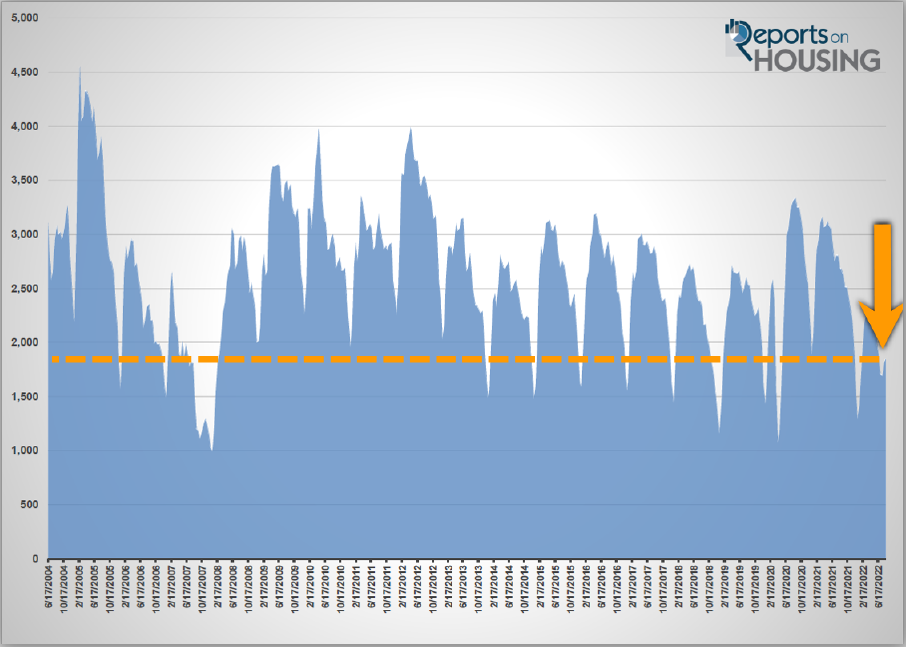Every recession is different. During the Great Recession unemployment skyrocketed and housing was a huge “house of cards” built on years of subprime loans, pick-a-payment plans, teaser rate adjustable mortgages, and fraudulent lending practices. It was not a shock that housing values sank. This “recession” will be entirely different. Thus far in 2022, the Orange County housing market has slowed from an Expected Market Time (the time between hammering in the FOR-SALE sign to opening escrow) of 19 days in early March to 65 days today, yet the slowing has stopped. In fact, the market time has dropped by 7 days since climbing to 72 days a month ago. To understand why housing has shifted but is not on the verge of collapse, look no further than to good old-fashioned supply and demand.
On the demand side of the equation (a snapshot of the number of new escrows over the prior
month), buyer activity has been muted all year. A premature peak was reached at the end of
March with 2,286 pending sales, down 28% from last year’s peak of 3,162 pendings. Compared to the 3-year average peak prior to COVID (2017 to 2019) of 2,816, this year was 19% less. Today, demand sits at 1,849, slightly higher than where it stood a month ago at 1,693. Even with the recent rise, today’s reading is the lowest level for this time of year since 2007, the start of the Great Recession. The current demand level is typically reserved for the slowest time of the year for real estate, January, with a 3-year average pending sales(2017 to 2019) of 1,551 pending sales, and December, 3-year average of 1,637. The August 3-year average is 2,506 pending sales, 36% higher than today.
Today’s demand levels are significantly muted due to mortgage rates rising from 3.25% at the start of the year to 5.72% where they stand today, according to Mortgage News Daily. The buyer pool has been impacted and reduced by the massive drop in affordability that accompanies such a steep rise in rates.


